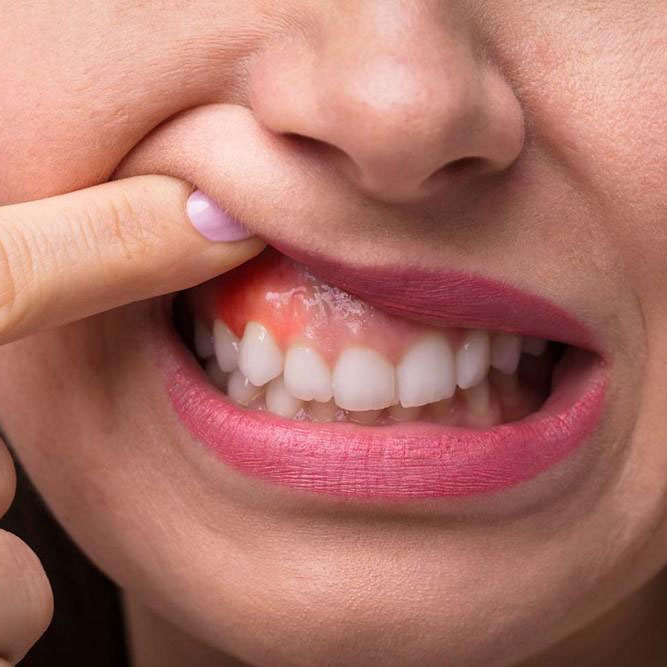Dental problems which are mainly unnoticed are Gum diseases, as these are not associated with any pain and ignored gum diseases will result to tooth loss. Gum diseases in the early phase may show up with early signs like, swollen gums (gingivitis), bleeding gums, left out food remnants between the teeth which results in bad breath. These can be resolve with periodic scaling and at house flossing.
What is Periodontitis?
Periodontitis is a severe gum disease that affects the tissues around your teeth. In Gum disease's early stages, it is known as gingivitis, here the gums can become swollen, red, and bleed. Periodontitis is the more serious form in which the gums pull away from the tooth, bone is lost, and teeth loosen or fall out. Periodontitis, if left untreated, increases the likelihood of a heart attack, stroke, or other health problem.
The Gum Diseases treatment for periodontitis includes deep cleaning of the tooth root surfaces beneath the gums, medications taken orally or placed directly under the gums, and, in more severe cases, corrective surgery.


Releives pain
Good Chewing Efficiency

Good Oral Hygiene
What are the symptoms of Periodontitis?
These are some of the usual symptoms of Periodontitis:
- Swollen or puffy gums
- Gums may bleed
- Gums may appear bright red, dusky red, or purplish
- Constant bad breath
- Pus may form between your teeth and gums
- Feel pain whenever you chew or bite
- Your teeth may become loose
- Loss of teeth gradually
- Feel uncomfortable while you bite
Treatment options:
Non surgical Treatment:
Scaling: Scaling removes tartar and bacteria from the surfaces of your teeth and beneath your gums. It could be done with instruments, a laser, or an ultrasonic device.
Root planning: Root planning smoothens the root surfaces, discouraging further tartar and bacteria buildup, and removes bacterial byproducts that contribute to inflammation and delay gum healing or reattachment to the tooth surfaces.
Surgical treatment:
Flap surgery:
Flap surgery is particularly beneficial for people with tartar deposits in deep pockets. To remove tartar buildup, the gums are raised away from the teeth.
The surgeon will stitch the gums into place to fit around the teeth after cleaning the area and removing tartar. During this procedure, the bone may need to be reshaped.
Bone grafting:
When the bone that surrounds the tooth's root is damaged or destroyed, a bone graft may be required. The damaged bone is replaced with new bone during this procedure. This bone could be the person's own, a man-made bone, or a donated bone.
The goal of bone grafting is to keep the tooth in place and aid in its regeneration.
Guided tissue regeneration:
A dental surgeon will insert a small piece of mesh-like material between a person's bone and gum tissue during this procedure.
The material prevents the gum from growing into bone spaces, allowing bone and connective tissue to regrow.
Tissue grafting:
Gum line recession is caused by the loss of gum tissue and may necessitate soft tissue grafting to reduce the risk of further damage.
A dental surgeon typically removes tissue from one part of the body and reattaches it to the area where the gum has receded during this procedure. The tissue is frequently derived from the roof of the mouth. Tissue grafting not only reduces the possibility of further damage, but it also covers any exposed roots.
Frequently Asked Questions
- Use fluoride toothpaste to brush your teeth twice a day.
- Use floss or an interdental cleaner to clean between your teeth on a daily basis.
- Consume a well-balanced diet and limit between-meal snacks.
- Visit your dentist on a regular basis for oral exams and professional cleanings ( scaling).


